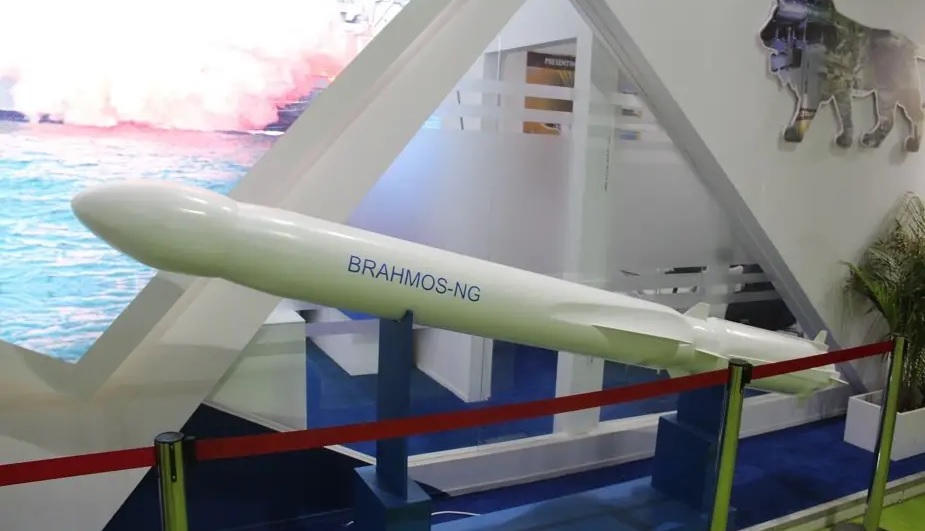BrahMos Aerospace Explores Ground-Based BrahMos-NG Missile System for High-Altitude Warfare

BrahMos Aerospace, a joint venture between India and Russia, is in advanced talks with the Indian Army to develop a ground-based version of the BrahMos-NG (Next Generation) cruise missile. This initiative aims to address the operational demands of high-altitude warfare, offering enhanced agility and deployment flexibility compared to its predecessor.
A Game-Changer for High-Altitude Operations
The proposed ground-based BrahMos-NG system is designed to meet the Indian Army’s specific needs for high-altitude terrains, where conventional systems often face logistical and operational challenges. Unlike the standard BrahMos missile, the BrahMos-NG is significantly lighter, weighing around 1.3 to 1.4 tons, compared to the 2.5-ton standard variant. This weight reduction enables the missile to be mounted on medium-class 8×8 Heavy Mobility Vehicles (HMVs), ensuring easier transportation and rapid deployment even in remote and mountainous regions.
Key Specifications of the BrahMos-NG
- Weight: 1.3–1.4 tons, significantly lighter than the original BrahMos.
- Length: Approximately 6 meters, making it shorter and more compact.
- Range: Up to 290 kilometers, with a planned increase to over 400 kilometers in future iterations.
- Speed: Mach 3.5, maintaining its position as one of the fastest cruise missiles in the world.
- Guidance System: Advanced inertial navigation system integrated with GPS/GLONASS, ensuring precision targeting.
- Payload: Capable of carrying a 200-300 kg warhead.
The missile's compact design not only enhances its mobility but also allows for integration across a variety of platforms, including trucks, aircraft, ships, and submarines.
Renewed Interest from the Indian Army
Initially, the Indian Army showed limited enthusiasm for the truck-mounted BrahMos-NG, focusing instead on its existing BrahMos systems. However, the lighter and more agile configuration of the BrahMos-NG has reignited interest, especially for high-altitude and rugged terrains, where the Army faces operational challenges. The integration of a booster stage in the ground-based variant will further enhance its range and performance, making it a strategic asset for mountainous regions.
The Army's focus is now shifting to complementing its existing missile arsenal with the BrahMos-NG, which offers logistical ease, faster deployment, and the ability to operate in previously inaccessible areas.
Broader Applications Across Services
The BrahMos-NG program has already garnered strong interest from the Indian Air Force and Navy for its air-launched and submarine-launched variants. The Air Force plans to deploy the missile on platforms like the Sukhoi Su-30MKI and the upcoming HAL Tejas Mk2, while the Navy is considering it for integration into submarines and smaller warships.
For the Army, the truck-mounted BrahMos-NG represents a strategic opportunity to enhance its missile capabilities while maintaining operational flexibility. Its ability to quickly mobilize in high-altitude regions makes it an ideal addition to India’s arsenal, particularly for defending critical areas along the northern and northeastern borders.
Strategic Advantages
The BrahMos-NG system's agility and lighter configuration address the unique challenges of high-altitude warfare. The reduced weight and compact design make it easier to transport, set up, and launch, even in difficult terrains. Its rapid deployment capability and extended range provide a strategic edge in scenarios requiring quick retaliation or preemptive action.
Additionally, the BrahMos-NG’s ability to target both land and sea-based threats ensures that it can serve multiple roles, offering a high degree of versatility. This aligns with India’s broader defense strategy of maintaining a multi-domain operational capability.
Looking Ahead
As discussions between BrahMos Aerospace and the Indian Army progress, the ground-based BrahMos-NG missile system has the potential to redefine the Army’s capabilities in high-altitude regions. If successfully integrated, it will complement the existing BrahMos fleet and serve as a critical asset in addressing evolving security challenges.
The system’s development underscores India’s commitment to self-reliance in defense manufacturing and innovation, as well as its readiness to adapt to complex and dynamic security environments. The BrahMos-NG is poised to be a game-changer, providing a strategic advantage to the Indian Army in its ongoing efforts to safeguard the nation’s borders.



